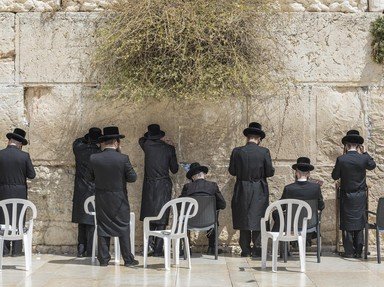Quiz Answer Key and Fun Facts
1. The Rambam, or, as he is commonly known in English, Maimonides, was a philosopher and scholar. What was his first name, named after the leader of the Jewish people as they were redeemed from slavery in Egypt?
2. The Rambam was very well travelled in his adulthood. He was born in a city in Andalusia that is known for starting the Spanish Civil War of 1936. What city is this?
3. When the Almohad Caliphate took over the city of Córdoba, the Rambam and his family had to relocate rather than convert to Islam. In which Moroccan city, associated with a type of head-wear, did the Rambam find a home?
4. One of the Rambam's most known works is a theological study that brought in philosophical arguments made by Aristotle and tried to reconcile them with Judaism; these are two seemingly-opposed views that clash, something that might have been disconcerting to a lesser thinker. It was known as "The Guide to the ________".
5. The pinnacle of the Rambam's commentary came in a unassailable text called the "Mishneh Torah" meaning the "Secondary Torah". A very powerful book, it was also called "Sefer Yad ha-Hazaka". This means "Book of the _____ Hand".
6. When living in Egypt, the Rambam was appointed as the Nagid of the Egyptian Jews. However, he also served in another vocation, one where he moved up the ranks and served the Sultan, personally, even as he continued to serve the members of his community in the same capacity. What other vocation did the Rambam have?
7. The Rambam had a younger brother, David, who passed away before his time. Perhaps trying to emulate Marco Polo, how did David ben Maimon pass away?
8. Aside from the Rambam's writings on the Bible, law, medicine, and astronomy, the Rambam was also a very strong supporter of astrology and tied it in to Biblical events.
9. When the Rambam commented on the Mishna (oral Torah), he wrote down what he believed were principles of faith. Reminding us of the age that Jewish boys go through a Bar Mitzvah, or the number of attributes of God, how many of them did he write down?
10. While the Rambam had a strong connection to the Land of Israel, he didn't live there. He lived close by, in Egypt, and had specific instructions for his own burial. Where were his remains interred and his tomb built?
Source: Author
LeoDaVinci
This quiz was reviewed by FunTrivia editor
looney_tunes before going online.
Any errors found in FunTrivia content are routinely corrected through our feedback system.
